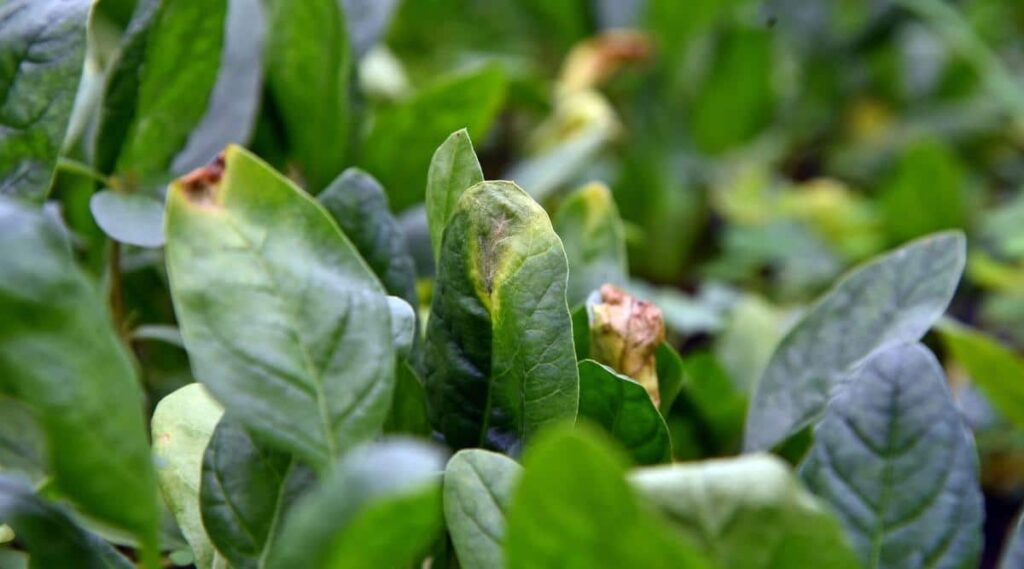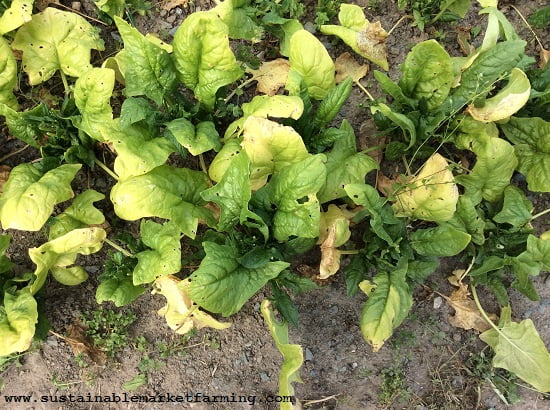Have you ever been puzzled by the sight of your perfectly green and vibrant spinach leaves suddenly turning a shade of yellow? It can be both confusing and concerning, especially if you take pride in cultivating a thriving garden. In this article, we will explore the possible reasons behind this phenomenon and offer some insights on how to address the issue and restore the health of your beloved leafy greens. Whether you are a seasoned gardener or just starting out, understanding why your spinach is turning yellow is crucial to ensure a flourishing harvest.
Potential Causes of Yellowing Spinach
If you’ve ever noticed your spinach leaves turning yellow, it can be quite alarming. After all, healthy spinach leaves should be vibrant, green, and full of life. But fear not, there are several potential reasons why your spinach is turning yellow, and with a little knowledge and troubleshooting, you can address the problem effectively.
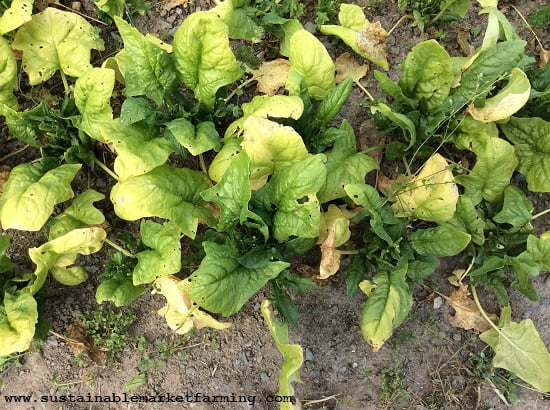
Nutrient Deficiencies
One possible cause of yellowing spinach leaves is nutrient deficiencies. Spinach, like any other plant, relies on a balanced supply of nutrients to thrive. When certain essential nutrients are lacking, it can manifest as discoloration in the leaves.
Lack of Nitrogen
Nitrogen is a vital nutrient for plant growth and development. It plays a crucial role in the production of chlorophyll, the pigment responsible for the green color in leaves. If your spinach lacks sufficient nitrogen, the leaves may start to turn yellow.
To address this issue, consider using a nitrogen-rich fertilizer specifically formulated for leafy greens. This will help provide the necessary nutrients for your spinach to regain its vibrant green color.
Iron Deficiency
Iron deficiency is another nutrient-related cause of spinach yellowing. Iron is vital for chlorophyll production, and when it’s lacking, the leaves can appear pale or yellowish.
To combat iron deficiency, you can try adding an iron fertilizer or supplement to your soil. Additionally, ensuring that the soil pH is within the appropriate range for spinach (around 6.0-7.0) can also aid in nutrient absorption.
Magnesium Deficiency
Magnesium is another essential nutrient for plant health. It is involved in numerous metabolic processes and helps regulate chlorophyll production. When spinach lacks sufficient magnesium, the leaves may exhibit yellowing or a mottled appearance.
To address magnesium deficiency, you can apply a magnesium-rich fertilizer or incorporate compost into your soil. Regularly testing your soil and amending it accordingly can help prevent nutrient deficiencies.
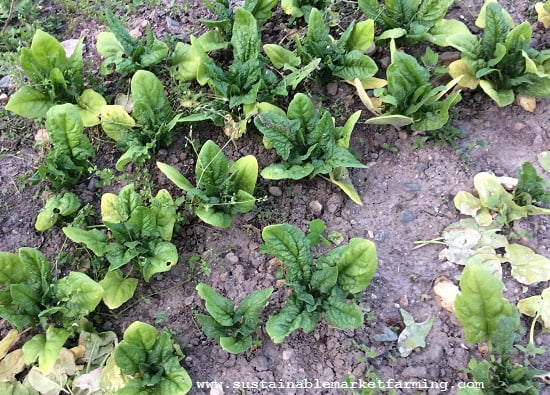
Diseases and Pests
In addition to nutrient deficiencies, spinach plants can also suffer from diseases and pests, which can contribute to yellowing of the leaves.
Fungal Diseases
Various fungal infections can affect spinach plants, leading to yellowing and other visible symptoms. Common fungal diseases that can cause yellowing include downy mildew and fusarium wilt.
To prevent and manage fungal diseases, it’s vital to promote good garden hygiene. Ensure proper spacing between plants for adequate airflow, avoid overhead watering (which can promote fungal growth), and promptly remove any infected plant material.
Viral Infections
Viruses can also afflict spinach plants and cause yellowing. Viral infections are commonly spread by insects, such as aphids or whiteflies, which act as vectors.
Unfortunately, there are no effective treatments for viral infections, and infected plants should be removed and destroyed to prevent the spread of the virus. To minimize the risk of viral infections, practice good garden sanitation and implement pest control measures.
Insect Infestations
Insects can wreak havoc on your spinach plants and contribute to yellowing leaves. Common culprits include aphids, spider mites, and leafhoppers. These pests suck the sap from the plants, leading to nutrient deficiencies and discoloration.
To combat insect infestations, you can try using organic insecticides or insecticidal soaps. Additionally, attracting beneficial insects like ladybugs or deploying physical barriers can help protect your spinach from these invaders.
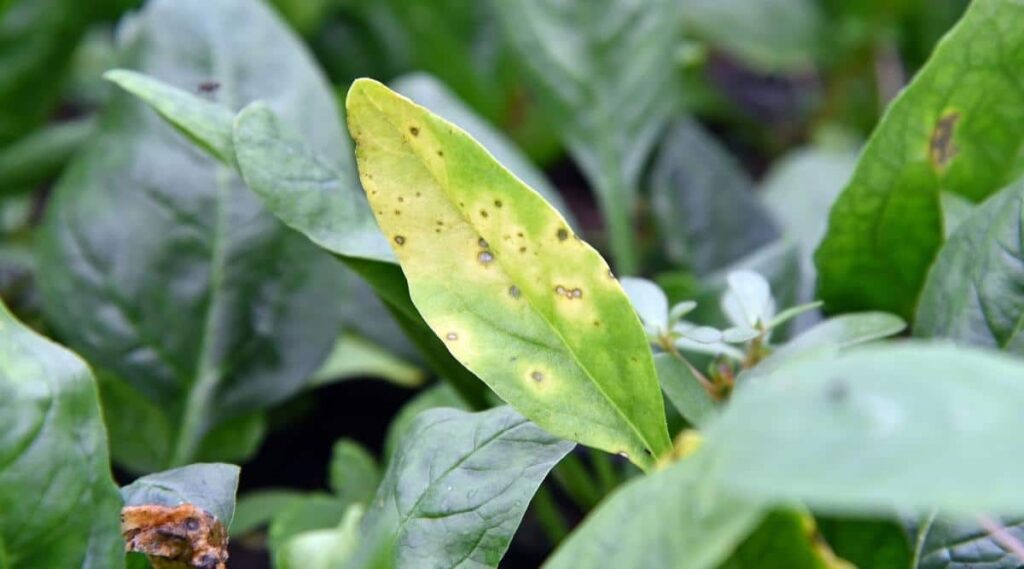
Environmental Factors
Environmental conditions can also play a significant role in the yellowing of spinach leaves. Factors such as excessive heat, overwatering, poor drainage, and high soil pH can all negatively impact the health and appearance of your spinach plants.
Excessive Heat
Spinach is a cool-season crop and thrives in mild temperatures. When exposed to excessive heat, the plants can become stressed, leading to leaf yellowing or even bolting (premature flowering and seed production).
To protect your spinach from excessive heat, plant it in a shaded area or provide temporary shade during the hottest parts of the day. Regularly watering and mulching the soil can also help maintain a cooler root environment.
Overwatering
While spinach needs an adequate water supply, overwatering can be detrimental to its health. Excessive moisture in the soil can lead to poor root oxygenation and nutrient imbalances, resulting in yellowing leaves.
To prevent overwatering, ensure proper drainage by amending the soil with organic matter. Water your spinach deeply but infrequently, allowing the top layer of soil to dry out slightly between waterings.
Poor Drainage
Poor drainage is closely related to overwatering and can exacerbate the effects of excessive moisture in the soil. When the roots are consistently sitting in waterlogged soil, the lack of oxygen can hinder nutrient absorption and lead to yellowing.
Improving drainage can be achieved by amending the soil with organic matter or by creating raised beds. If poor drainage persists, consider relocating your spinach to an area with better soil composition or implementing drainage systems.
High Soil pH
Spinach prefers a slightly acidic soil pH, typically ranging from 6.0 to 7.0. When the pH exceeds this optimal range and becomes too alkaline, the plants may struggle to absorb nutrients properly, resulting in yellowing leaves.
To address high soil pH, you can amend the soil with organic matter, such as compost or peat moss, which can help acidify the soil. Additionally, using amendments like elemental sulfur or agricultural sulfur can gradually lower the pH over time.
In conclusion, yellowing spinach leaves can be caused by a variety of factors, including nutrient deficiencies, diseases and pests, and environmental conditions. By understanding and addressing the specific cause behind the yellowing, you can take appropriate measures to restore the vitality and vibrant green color to your spinach plants. With proper care and attention, your spinach will be thriving and ready to enjoy in no time.
